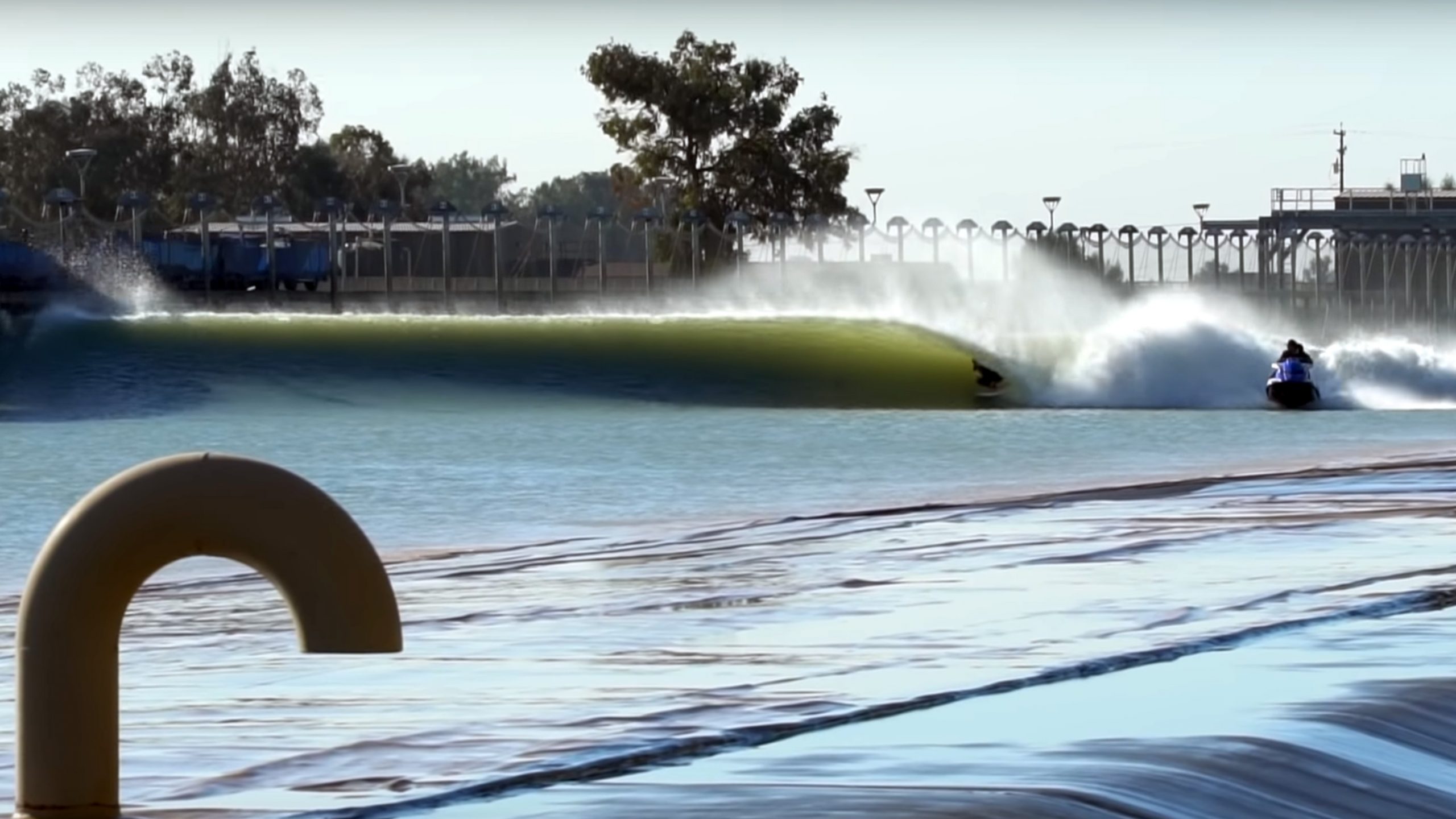Any excuse. Research team hits Kelly’s wave pool to prove that offshore wind is best

Offshore wind good. Onshore wind bad. The research study we didn’t really need, but we’re stoked to have. Plus, the researchers got to go to Kelly’s.
A team of scientists from Scripps Institution of Oceanography at UC San Diego took a trip to the Kelly Slater Surf Ranch to do extensive research about how wind affects waves.
Falk Feddersen, a leading researcher at the school and author of such sizzling tomes as “Inhomogeneous Turbulent Dispersion across the Nearshore Induced by Surfzone Eddies” convinced a team to go and set up camp at the world’s most famous wave pool.
The group of researchers discovered and cataloged once and for all that offshore wind tends to encourage the development of a tubular barrel while onshore winds instead tend to contribute to prematurely “spilling” or breaking waves.
“Wave models to date have not included these wind effects,” Scripps Oceanography coastal physical oceanographer Falk Feddersen told UC San Diego Today. “Surfers know when the wind is offshore, the surf is generally better than onshore. This is common surfing wisdom, but it has not been something that has been scientifically studied.”
The wave on the left hand side is generated in the presence of onshore winds and the right hand side in the presence of offshore winds. A team led by Scripps Institution of Oceanography at UC San Diego found that offshore and onshore wind change the distribution of pressure on the surface of the wave, changing its shape as it breaks.
UC San Diego Today reported that the analysis, which appears in the Journal of Fluid Mechanics and is co-authored by scientists from the University of Southern California (USC), the U.S. Army Corps of Engineers (USACE), and the University of North Carolina at Wilmington (UNCW) as well as a team from the World Surf League and the Kelly Slater Wave Company (KSWC).
To study the waves the team recorded breaking waves using mounted cameras, drones, and light detection and ranging (LIDAR) technology (see videos.) Then the scientists measured the strength and direction of the wind. Offshore and onshore winds, they concluded, change the distribution of pressure on the surface of the wave, changing its shape as it breaks.
The applications of the study will dig into how wind influences how sand is picked up from the seafloor under breaking waves and how that determines what beaches and surf zones look like.
Co-authors of the study were Katherine Brodie, Adam Young, M.S. Spydell, and Kentaro Hanson. You can check out the full study here at this link.
Related Coverage
